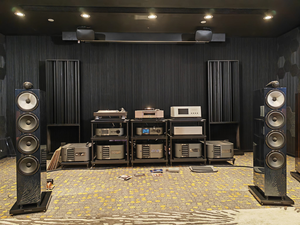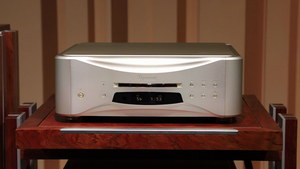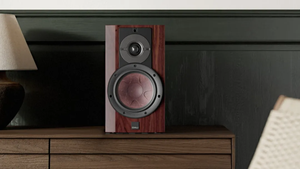
Focal Aria K2 926 review
I don’t want to waste your time, so I’ll get straight to the point. If you’re on a budget, if you’re after sound quality, if you care about the appearance of the speaker, if you don’t like fancy designs, if you want a speaker that’s easy to drive, if you want a speaker that’s good for both music and movies, if you have a soft spot for small floor-standing speakers, then, please read on. The Focal Aria K2 926 is a pair of speakers that meet all the above conditions. At an affordable price, it meets the needs of being good-looking, good-sounding, and practical.
Focal speakers are divided into seven major series, ranging from affordable entry-level to luxurious flagship models, making their product line quite comprehensive. The flagship is the Utopia III EVO series, which caters to the top-tier crowd and ultimate audio enthusiasts. Below that are the Sopra and Kanta series, both of which incorporate the same speaker angle design as Utopia to achieve precise time phase in the mid-to-high-end series. Starting from the entry-level, there are three series: Chora, Theva, and Vestia, all of which share Focal developed Slatefiber Cone speaker technology, creating a unique line within the Focal family. The mid-range series is Aria K2, which is also the successor to the early 900 series.
This is interesting. The three series above Aria K2 emphasize time phase and
make a common speaker angle. The three series below it use the same speaker diaphragm technology to establish kinship. This division seems to push Aria K2 to the edge of the family, isolating it.

Actually, the Aria K2 carries a historical legacy, the most noticeable of which is the K2 diaphragm used in this series. In 1986, Focal first introduced the Polykevlar (Poly-K) diaphragm, which uses a double layer of aramid fiber, with tiny spherical pore structures on both sides, to achieve a balance in the weight, rigidity, and damping properties of the diaphragm. By 2016, this classic diaphragm had evolved technologically. Based on the three prerequisites of high rigidity, low mass, and good damping for the diaphragm, a new structure was developed, combining a very light foam layer between the aramid fiber layer and the glass fiber layer. This new K2 diaphragm looks similar on the outside, all yellow, but the structure and formula are different. Focal first used this K2 diaphragm on the limited edition 40th anniversary speaker, Spectral 40th, and then applied it to the mid-range series, Aria K2. Aria K2 is also the only series in Focal’s current home speakers that uses the K2 diaphragm.

The Aria K2 series includes four types of speakers: two floor-standing speakers, including the flagship Aria K2 936 and the smaller Aria K2 926, a pair of bookshelf speakers Aria K2 906, and a center speaker Aria K2 Center. Focal’s product lineup in recent years has been comprehensive, with each series including floor-standing, bookshelf, and center speakers, clearly intending to cater to both stereo and home theater systems.

The Aria K2 926 is a 4-unit, 3-way bass reflex speaker. The tweeter is a 1-inch TNF aluminum-magnesium alloy inverted dome, with a suspension using a material called Poron, which has shape memory properties. The manufacturer further points out that this technology, which is a continuation from Utopia, can make the treble softer and less sharp. Moreover, the diffusion of the inverted dome tweeter is better than the commonly seen convex dome tweeter, and with the elliptical waveguide around the tweeter, it enhances the horizontal diffusion and also improves the sound imaging.

The midrange unit is a 6.5-inch single-layer K2 diaphragm midrange, followed by two 6.5-inch double-layer K2 sandwich diaphragm bass. The midrange seeks a fast and precise response, while the bass seeks a high sound pressure tolerance. There is a metal decorative frame around the unit, marking the classic status of the K2 diaphragm and providing a visually high-end feel.

The speaker box is made of high-hardness MDF. The front baffle is slightly wider than the rear, and the design is slightly receded to reduce parallel surfaces. The side panels are also curved to control vibration and suppress resonance. There are two bass reflex ports, one facing forward and one facing downward. The downward-facing port directs airflow in four directions through the guide plate on the bottom plate. The bottom plate is cast from aluminum alloy, providing a stable base, and there are four adjustable spikes. The appearance of the Aria K2 series is consistent, only offering a gray glossy paint version. The front and rear baffles have a leather texture, and the grille is magnetic.
In addition, it is worth mentioning the specifications of the Aria K2 926. With a sensitivity of up to 91.5dB, it is considered highly sensitive among floor-standing speakers of the same size. Coupled with an impedance of 8 ohms and a minimum impedance of 2.9 ohms, these data suggest that the Aria K2 926 is not difficult to drive even before listening to the sound. But how exactly? Let me talk about my audition experience.



I used the EAR Yoshino 868 preamp and 509 mono power amp to drive it, with the YBA Passion CDT-450 turntable and Merging NADAC as the source. The Focal Aria K2 926 is not large in size, but the sound field is large, the sound is open, and the energy is abundant. In terms of its texture, the delicate elegance of the Aria K2 926’s appearance is also reflected in its sound, bringing a certain kind of exquisite, clear, and gorgeous texture.
All of the aforementioned characteristics can be heard in Anne-Sophie Mutter’s album “Across the Stars”. Mutter’s violin sound is clear, vivid, and tangible, with excellent penetration. In some lively pieces or passionate sections, it displays full vitality and rich expressions. For example, in the first track “Rey’s Theme”, the violin sound shows the heroine’s determination and courage, with solid and cohesive notes, expressing the musical phrases affirmatively and decisively. When Mutter performs, she interprets the music, which for this kind of thematic music, further transforms the music into a three-dimensional character. The Aria K2 926’s clear, brisk, and solid mid-high sound vividly depicts Rey’s heroic posture. As for the fifth track “Donnybrook Fair”, the rapid transformation of legato phrases brings out a joyful atmosphere. Through the wandering and jumping in the high position, serving as the transition of emotion and theme, each note is full of dynamism.

When playing Beethoven’s Fourth Piano Concerto, performed by Alfred Brendel on the piano and conducted by Simon Rattle with the Vienna Philharmonic, the Aria K2 926 presents this elegantly poetic piece in a singing manner. The piano notes are clear and rounded, and the brilliant colors of the decomposed chords and dotted ornamentation show the advantages of Focal’s aluminum-magnesium tweeter. The Aria K2 926’s singing quality when performing the piano can also be seen in the soothing and gentle melody of the second movement. In the dialogue between the piano and the bass strings, the music develops through a series of questions and answers. The bass of the Aria K2 926 is not particularly rich and deep, which may seem light for those who prefer a solid lower register; for those who prefer bright colors, this restrained and moderate bass is just right. The bass strings, at this appropriate thickness, still carry clear expressions and textures, showing the texture of the string music, and this is the beauty I like. When this dialogue comes to an end and enters the tremolo group before the seamless transition to the third movement, the melody combed out by the piano, with a faint melancholy, shines brightly in the high notes, which is truly beautiful.

Listening to Daishin Kashimoto playing the violin, in collaboration with Konstantin Lifschitz performing Beethoven’s Tenth Violin Sonata, their duet makes this Tenth Sonata exude happiness. The Aria K2 926 has clear, bright, and colorful mid-high tones, which are particularly handy when performing the violin and piano. The wonderful fourth movement incorporates seven theme variations. At the beginning, the folk-style theme is presented alternately by the piano and violin. The first variation interestingly deconstructs the theme, allowing the piano and violin to converse with each other. The lively second variation uses triplet notes to create a dance-like surprise. The third variation retracts the emotion, allowing the violin to slowly play the melody, with the piano accompanying in a dark and unclear manner. The powerful violin playing in the fourth variation has a full tension and penetrating sound. The slow tempo of the fifth variation is like the twinkling starlight when the night falls, or like the moon swaying in the lake’s reflection; the violin is like a gentle night breeze, and the piano is both the starlight and the ripple.

While listening to the “Cantate Domino” album, the colors of the pipe organ are truly rich. The first track, “Cantate Domino”, starts with the pipe organ. The grandeur and magnificent tone of the pipe organ are quite impressive on the not-so-large Aria K2 926. When performing the choir, it’s not a problem, with a clear sense of the scene, sorting out the division and combination of the four-part choir. The blended yet layered choir adds a sense of nobility and glory to the praise of God. The pipe organ powerfully broadcasts the glorious and noble hymn, and the texture produced by the metal pipe wall is clearly audible.

The Aria K2 926 also has considerable performance when it comes to vocals. It has a clear, vivid image, and abundant detail information. Therefore, the vocal details during singing, including vibrato, articulation, and the sounds of lips, teeth, and throat, can all be expressed clearly. At the same time, it won’t bring discomfort from listening for a long time due to too much “sibilant” sound. Take Billie Eilish’s “Lo vas a olvidar” as an example. The ethereal and open sound effect expands the space, and the stage of Aria K2 926 is already large, at least, it can achieve more than it looks. What is more captivating is Billie Eillish’s voice, which changes between true and falsetto, and is further supplemented with some breathy voice. These vocal characteristics, and the changes in them, can all be heard clearly. This kind of vocal performance is good for listening to songs and watching movies, and the dialogue effect is also very good. I didn’t play the movie, but in the original soundtrack of “A Star Is Born”, there are multiple tracks of dialogue lines, and they all sound very real.

This is the second pair of Aria K2 speakers I’ve listened to, the first time was the Aria K2 936, and both listening experiences were enjoyable. Going back to the beginning of the article, if the conditions you set are exactly as I described, and the description of the sound in the text meets your expectations, then this pair of Aria K2 926 is really worth your time to listen and see. (At least take a look, it’s really good-looking!)






Comments